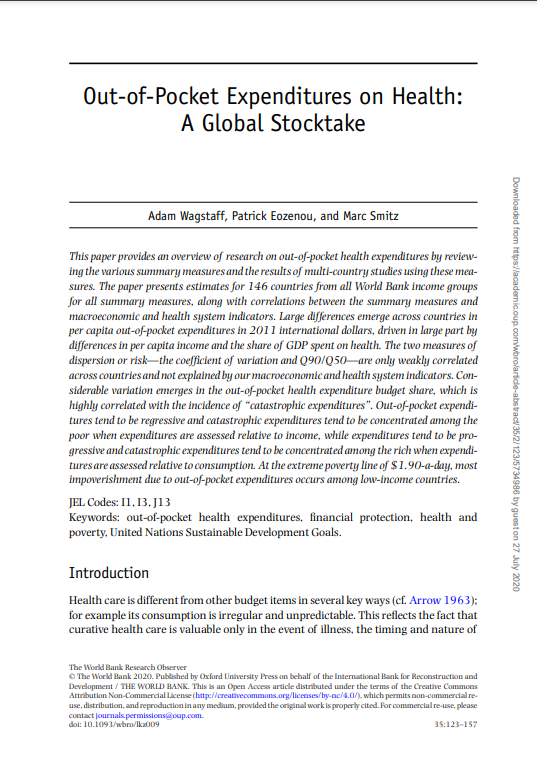Out-of-Pocket Expenditures on Health : A Global Stocktake
Licencia: Creative Commons (by-nc)
Autor(es): Wagstaff, Adam; [et al.]
This paper provides an overview of research on out-of-pocket health expenditures by reviewing the various summary measures and the results of multi-country studies using these measures. The paper presents estimates for 146 countries from all World Bank income groups for all summary measures, along with correlations between the summary measures and macroeconomic and health system indicators. Large differences emerge across countries in per capita out-of-pocket expenditures in 2011 international dollars, driven in large part by differences in per capita income and the share of GDP spent on health. The two measures of dispersion or risk—the coefficient of variation and Q90/Q50—are only weakly correlated across countries and not explained by our macroeconomic and health system indicators. Considerable variation emerges in the out-of-pocket health expenditure budget share, which is highly correlated with the incidence of "catastrophic expenditures". Out-of-pocket expenditures tend to be regressive and catastrophic expenditures tend to be concentrated among the poor when expenditures are assessed relative to income, while expenditures tend to be progressive and catastrophic expenditures tend to be concentrated among the rich when expenditures are assessed relative to consumption. At the extreme poverty line of $1.90-a-day, most impoverishment due to out-of-pocket expenditures occurs among low-income countries.
[2020]
Compartir:
Una vez que el usuario haya visto al menos un documento, este fragmento será visible.


